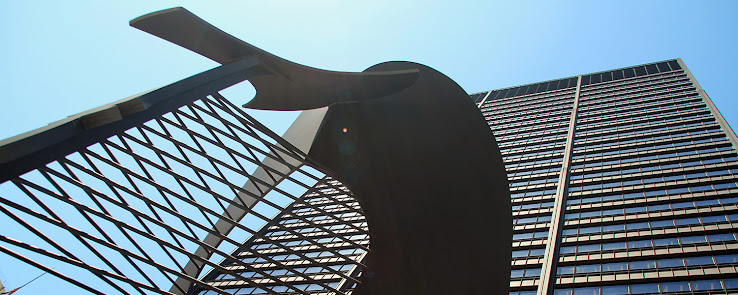

What you see ...
Location: Field Museum lawn ...
The museum campus gives an incredible view of Chicago skyline ...
"What you see" is self-explanatory...

For more on Grant Park ..
# Public Art in the Grant Park .. click here ....
# Gardens in the Grant Park .. click here ..
# Often overlooked but remarkable features like pedestrian crossings, the railway lines underneath, the street lamp posts, balustrade, corbels, the Y-symbols .. click here ..
# For a brief history of Grant Park .. click here ..





















